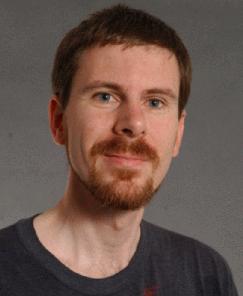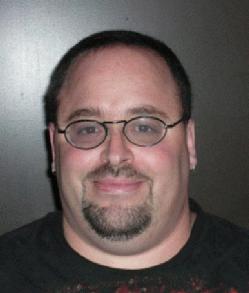On this page, we wish to introduce ourselves, with a short abstract of our
ongoing and recent past research interests.
Rogier Windhorst

Regent's Professor
Ph.D., Univ. of Leiden, 1984
|
Windhorst's research lies in astronomy, cosmology, galaxy formation and
evolution, the cosmic dark ages and the epoch of First Light, as well
as astronomical instrumentation. Since the early 1990s, his group at
ASU has contributed significantly to unraveling the formation and
evolution of distant galaxies with the Hubble Space Telescope. He is
one of the six Interdisciplinary Scientists for NASA's 6.5 m
James Webb Space Telescope (JWST), to be launched in 2013. His group
at ASU plans to use JWST to map the epoch of First Light in detail.
Download CV [PDF]
Web Site
E-mail: rogier.windhorst@asu.edu
Office: PSF-248
Voice: 480-965-7143
Fax: 480-965-8102
|
|
Rolf Jansen

Research Scientist
Ph.D., Univ. of Groningen, 2000
|
Jansen's research focuses on ground- and space-based UV–near-IR
and Hα surface photometry and spectroscopy of nearby galaxies.
His aim is to study their content and to unravel their formation and
assembly histories as a function of galaxy type, luminosity, and
cosmic environment, and to track the hierarchical assembly of galaxies
and the emergence of the Hubble sequence by z ~ 1.
He serves as Instrument Scientist for a NASA concept study into a next
generation UV–optical space telescope.
He also provides computer and astronomical data analysis support within
the SESE Cosmology Group.
Download CV [HTML]
Web Site
E-mail: rolf.jansen@asu.edu
Office: PSF-230
Voice: 480-727-7119
Fax: 480-965-8102
|
| |
James Rhoads

Associate Professor
Ph.D., Princeton Univ., 1997
|
Rhoads studies galaxy formation, galaxy evolution, the reionization of
intergalactic hydrogen by early galaxies. He also studies the nature
of γ-ray bursters through the physics and phenomenology of their
long wavelength afterglow emission. His studies of distant galaxies
include surveys to identify Lyα emitting galaxies through
narrowband imaging, and to study their physical nature, using
ground-based telescopes in Arizona and Chile, along with the Hubble
Space Telescope and Chandra X-ray Observatory.
Download CV [PDF]
Web Site
E-mail: james.rhoads@asu.edu
Office: PSF-251
Voice: 480-727-7133
Fax: 480-965-8102
|
|
Sangeeta Malhotra

Associate Professor
Ph.D., Princeton Univ., 1995
|
Malhotra's research focusses on finding and characterizing galaxies
back in the days when the universe was very young (less than 10% of its
present age). The specific projects she worked on in this topic are
(1) LALA (the Large Area Lyman-Alpha survey): a project to find high
redshift Lyα emitting galaxies; (2) GRAPES and (3) PEARS, which
use the grism of ACS on the Hubble Space Telescope. GRAPES provided
the deepest spectroscopy ever on galaxies within the Hubble Ultra Deep
Field.
Download CV
Web Site
E-mail: sangeeta.malhotra@asu.edu
Office: PSF-240
Voice: 480-965-2552
Fax: 480-965-8102
|
| |
Evan Scannapieco

Assistant Professor
Ph.D., U of CA Berkeley, 2001
|
Scannapieco is a theoretical astrophysicist who studies galaxy and
structure formation and the cosmological evolution of the elements,
closely tying theory with observations. He uses techniques ranging
from paper and pencil to massively parallel computations.
His focus areas include the impact of black holes on galaxy formation,
type Ia supernovae and γ-ray bursts in a cosmological context,
high-z galaxy formation and the search for primordial stars,
and the numerical modeling of turbulent mixing during the cosmic rise
of the elements.
Download CV [PDF]
Web Site
E-mail: evan.scannapieco@asu.edu
Office: PSF-234
Voice: 480-727-6788
Fax: 480-965-8102
|
|
Norman Grogin

Research Scientist
Ph.D., Harvard Univ., 1999
|
Download CV [HTML]
Web Site
E-mail: norman.grogin@asu.edu
Office: PSF-269
Voice: 480-965-0720
Fax: 480-965-8102
|
| |
Seth Cohen

Postdoctoral Fellow
Ph.D., Arizona State Univ., 2003
|
Download CV
Web Site
E-mail: seth.cohen@asu.edu
Office: PSF-274
Voice: 480-965-0663
Fax: 480-965-8102
|
Information on some of our Hubble Space Telescope programs can be found on
our HST web-page.
|